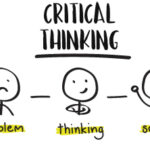A productive classroom is a happy one! It means that in a productive classroom students take ownership for their learning and are meaningfully engaged. They play an active role in the learning process thereby increasing the overall class productivity. Positive and productive classrooms lead to student’s emotional, social and academic
excellence. Unfortunately, productive classrooms do not just happen on their own, they need to be created. There are too many factors that together make a class productive, these include – a climate of mental safety, encouraging risks, trustful relationships, open
communication and so on…
Productivity is not just getting stuff done, it is getting stuff done meaningfully. In a productive classroom, students are problem solvers, critical thinkers, communicators, risk takers, initiators and collaborators.
There is so one specific formula to build a productive classroom, neither does it happen overnight. It is better to begin in the early days of the year, but nonetheless, never too late to get started! Teachers, let’s explore some simple tips and strategies to create high levels of classroom productivity!
1. Build a safe space for the student: All students deserve to learn in a safe and happy environment. This means that the students not only need to feel safe physically, but also socially and emotionally- to express and to think! As a teacher, you need to connect and build a rapport with each student such that they feel welcomed and an important part of your class.
2. Make learning relevant: The more the topic or subject becomes relevant to the student, the more involved the student will be in the learning process. It is important that the teacher discovers each student’s interests, talents and learning styles so as to connect math, science or language to their interests to make learning meaningful. When you adapt to the student’s needs, you will observe that the students become more engaged and attentive.
3. Develop a code of conduct: Define clear essential agreements at the begin of the year and be consistent. These agreements can be mutually decided by the students and you! Rather than using punishments as a disciplinary measure, try different engaging classroom management strategies. Knowing different strategies that can prevent or minimize distractions can help establish a productive classroom.
4. Let student’s self and peer assess: Students are natural collaborators and in groups, they get a chance to establish their strengths and talents. When inn groups, students should be given opportunities to self-reflect and assess their peer’s performances too. While these assessments reduce the teacher’s workload, they also let student’s demonstrate their learnings effectively. It helps students understand their own learning and also reinforces collaboration. Self- reflection is something that both students and teachers should engage in to make the classroom more productive. It also helps in deciding the future actions and processes.
5. Be available for them, always: Sometimes students will struggle and find it difficult to handle the pressure of keeping up with their classmates. They might get stuck which might lead to doubts, concerns or questions. When it does, they will need your support and encouragement. With an open mind and the right words you can turn their frustration and confusion to confidence and the ability to see beyond problems.












